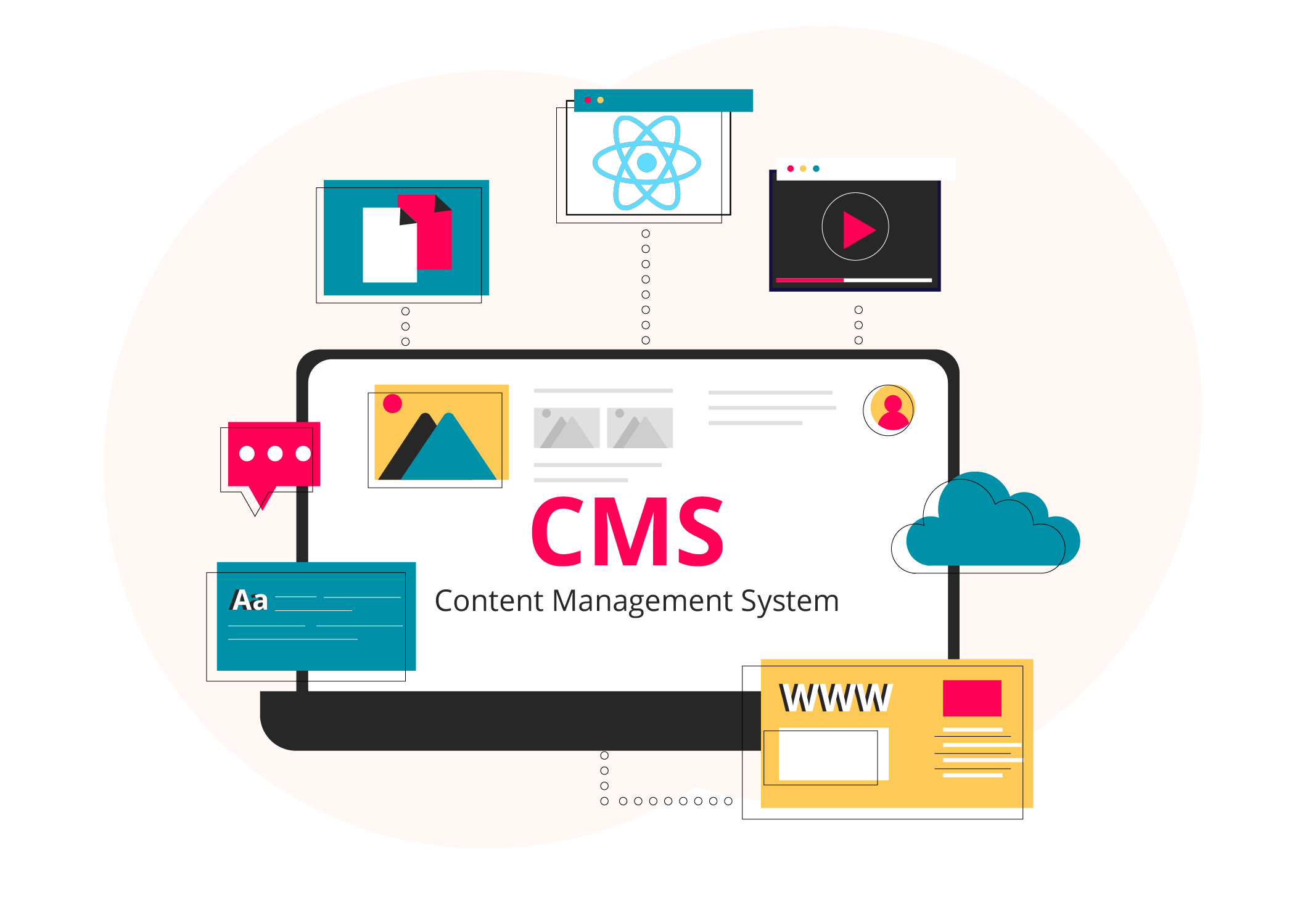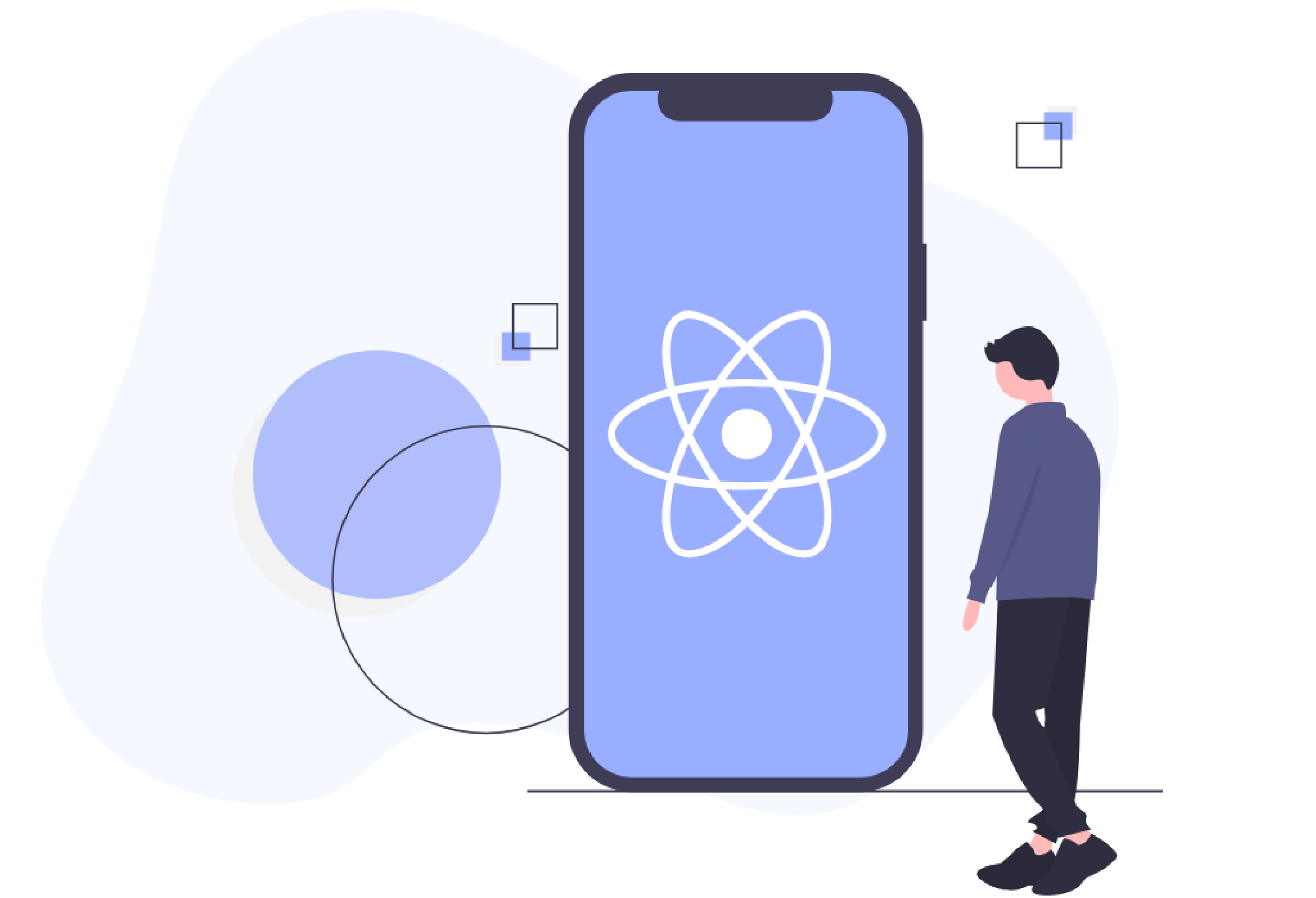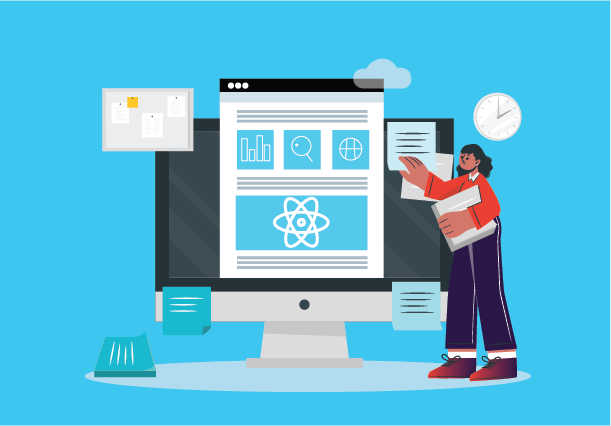Comprehending the Topic of React CMS
React CMS, never heard of it? But before dealing more with this topic, let’s see what react stands for. React is an open-source JavaScript library for building all the user interfaces. It also offers a declarative approach that entirely simplifies the UI creation via efficient virtual DOM utilization. Now let’s slightly move into understanding CMS, as we all are aware CMS stands for content management system is a software platform that allows users to edit, create, organize, and publish all the content on the digital platform like articles, blogs, videos, etc. But what if they both blend react and cms? React CMS is often referred to as a CMS that is built using the React JavaScript library.

Headless CMS is a system that allows developers to manage and distribute content across various channels like websites, mobile apps, and social media platforms. Also, headless CMS brings various benefits on the hand that we will be magnifying in this blog later on. In this article, we will deal with some additional insights about headless react cms, followed by some basic benefits and we will also see how this duo matches in heaven! Further, if you are curious to know more about this perfect duo; and how they work, don’t worry we have peppered down about this knowledge as well!
Raining about the Overview of Headless React CMS
Headless CMS, yes the content management system that doesn’t use its mind because it’s headless! Funny though, but headless CMS is indeed a content management system that majorly focuses on managing and delivering all types of content while dissecting the content management functionality from the presentation layer. Traditional CMS platforms generally combine content management along with a built-in frontend for displaying all the content, and on the other hand, headless CMS offers content through API an Application Programming Interface that completely allows developers to deliver the content to any devices or any platform through HTTP requests.

The term headless in the CMS refers to the separation of the head, the frontend, or the presentation layer from the body which is the backend or content management system. The architecture of headless react CMS includes content management that allows all the developers to use a user-friendly interface to create, edit, and manage content.
All this content is stored in a properly structured format in a database. Another is API which is called an Application Programming Interface where the headless CMS exposes all the content via API by RESTful or GraphQL. This allows developers to make requests to the API to extract all the content in JSON or XML format. Additionally, the last segment is frontend the layer of the application separates from the CMS platform. They consume all the content from the headless react CMS through APU requests and then entirely render it in the desired format using technologies like Angular, React, and Vue.js.
Marvel Benefits of Headless React CMS built with React
When it comes to adding benefits to the plate, headless CMS brings a plethora of key benefits to it. To begin with, the first benefit is customizability; since React is a flexible framework it allows developers to build customized components followed by templates for all the content presentations. With the headless CMS and React, developers cannot create a custom user interface that meets the specific requirements and needs.
The second added benefit is scalability; as we are aware React is known for its scalability and performance that is useful for building large-scale applications. This entirely predicts that headless CMS coupled with React can easily handle large amounts of traffic and content making it suitable for every organization or business that needs to scale their application at a very fast pace.

React is considered to be a best friend of SEO which can easily index all the pre-rendered HTML. Moreover, React CMS can easily be implemented with several other tools and libraries like Redux for managing content and React Router for routing. Also built CMS in React is considered to be as developer-friendly due to its component-based architecture, declarative syntax, and several other virtual DOMs that make it a complete package for developers to work with the CMS.
Not only react cms is developer-friendly but it reduces the development cost and time, hence improving the overall quality of the codebase. Furthermore, React JS also has a large and active community of developers with many other resources and libraries that are available to use. This completely makes it easier to get started with the CMS platform to find all solutions to other problems as well as stay up to date with the best practices and trends in the current industry.
Convolutions of Understanding How React JS CMS Works
We are aware that headless CMS with react-based frontend works by segregating the content management and presentation layers of all the web applications. Typically in every React JS CMS platform, the presentation layer is tightly packed with the content management system which means that the content management system also controls the presentation of the content on the website.
This completely means that it can make it difficult to make changes to the presentation layer without affecting the content management system. When a React CMS is disintegrated with the content management system and the presentation layer it provides headless CMS with a thorough API that allows developers to build a customized frontend using the React Library.
Simply, the content is created in a headless CMS platform, and this CMS provides a user interface for all the content editors to create, edit, and publish the content respectively. The content is further stored in the headless CMS and subjected via API like GraphQL or REST, which offers the content to be retrieved by the frontend application. Moving on to the frontend application which is built via react components it retrieves the entire content from the API and appears on the page.
Once the changes are made in the headless CMS it will immediately appear on the frontend application without the need to make any further changes to the existing application code. With the help of tools like Redux and React Router, the React frontend applications can be personalized and extended with the help of these tools to make it easier to make any further changes to the presentation layer without affecting the CMS platform.
Combining Headless CMS and ReactJs in an E-Learning Platform
Presently as we see education has undergone a few digital transformations the combining duo of React JS and headless CMS is transforming the educational or e-learning platform. One of the major advantages of the e-learning platform is the headless CMS manages and delivers a diverse range of content from text-based lessons to multimedia resources and interactive assessments.
Furthermore, with the help of headless CMS, educators can manage all the content in a structured, centralized manner which properly enables the content creation with structured organization and updates. Moreover, another added benefit of the headless CMS for e-learning is that it offers an intuitive user experience that can be easily adapted to the devices and preferences when React JS is integrated with headless CMS.
React’s component-based architecture allows for the creation of reusable UI elements, streamlining development and ensuring a cohesive user experience across the platform. In the e-learning platform, headless react cms, all the educators can personalize the learning experiences based on every individual learner’s preferences, progress, and performance.
Also by implementing data insights from the headless CMS, like learner analytics and assessment results all the educators can dynamically adjust the content according to the needs of each learner, which eventually will drive more engagement. Besides, as we see the growing demand for online education continues to grow, scalability and flexibility are essential considerations for e-learning platforms. By disintegrating the content management from the Headless CMS and implementing React JS for frontend development, the e-learning platform can easily accommodate growing user bases and evolving content requirements.
Sketching the Conclusion of React CMS with Pattem Digital
Now let’s paint a conclusion of this blog, as we have witnessed that the headless react CMS is the new key to the door to the opportunity across various industries including the learning panel of e-learning platforms. With react cms managing and delivering diverse content types and ReactJS providing responsive, personalized user interfaces, educators can revolutionize the way they engage with learners and deliver content-driven experiences. Also, implementing the flexibility and customization capabilities of this powerful duo, drives more engagement and improves the overall learning experience.
Pattem Digital, a leading react js development company understands the vital role of these technologies that plays a major role in rekindling the future. Our team of experienced developers specializes in crafting customized solutions tailored to the unique needs of our clients, leveraging the latest technologies and best practices to drive innovation and excellence.





